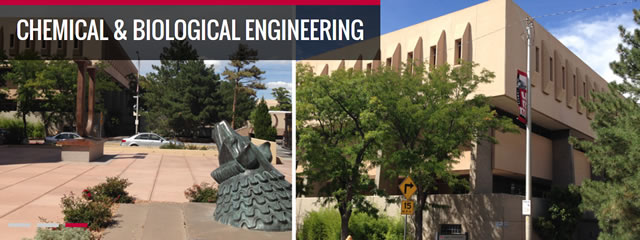
Chemical and Biological Engineering ETDs
Publication Date
8-17-2011
Abstract
Virus-like particles (VLPs) of MS2 bacteriophage possess a variety of characteristics that enable their use in biomedical and materials science applications. MS2 VLPs are perfectly monodisperse and possess a highly regular periodic structure. Their protein capsids can be modified in precise locations via chemical conjugation or genetic display of peptides, and their interior volumes can be readily loaded with a variety of non-genomic materials by taking advantage of their ability to self-assemble in the presence of RNA and RNA-modified cargos. Using peptides identified by filamentous phage display, I have demonstrated the utility of MS2 VLPs as targeted nanocarriers capable of highly specific delivery of various therapeutic and imaging agents to human cancer cells in vitro and as templates in the synthesis of novel types of nanomaterials, including self-assembled hexagonal close-packed arrays and nanoparticles with greatly enhanced surface plasmonic properties. Multivalent peptide display on MS2 VLPs greatly enhances their affinity for target cells (e.g. hepatocellular carcinoma), providing the specificity necessary to deliver various therapeutic agents, including chemotherapeutic drugs, siRNA cocktails, and the A-chain of ricin toxin, to cancer cells without affecting the viability of normal cells (e.g. hepatocytes, endothelial cells, and immune cells). siRNA cocktails and ricin A-chain, when delivered to cancer cells via targeted VLPs, induce apoptosis within 48 hours at concentrations less than 10 pM and 100 fM, respectively. Multivalent peptide display on MS2 VLPs also promotes the deposition of remarkably thin, conformal coatings of gold. By encapsidating 16-nm quantum dots within VLPs prior to the metallization of their exterior surface, I hope to create a new class of core-shell nanoparticles with greatly enhanced fluorescence properties. Finally, evaporation-induced self-assembly of MS2 VLPs enables the formation of highly ordered hexagonal close-packed monolayers, the long-range periodicity of which can be measured using in situ GISAXS. Assembling the core-shell nanoparticles into a 2D array potentially enables construction of a hybrid plasmonic waveguide that allows optical energy to be transported from one location to another beyond the diffraction limit. For solar energy harvesting applications, the absorption coefficient of quantum dots is enhanced by the metal plasmonic shell, potentially enabling the development of an ultra-thin solar cell. I have, additionally, developed a porous silica nanoparticle-supported lipid bilayer (protocell') for targeted delivery applications. Protocells combine enhanced specificity, stability, and cargo capacity when compared to similarly-sized liposomes. They can, additionally encapsulate and deliver multicomponent cargos. Due to their unique biophysical features, protocells loaded with drug cocktails (e.g. doxorubicin, 5-fluorouracil, and cisplatin) are able to kill drug resistant cancer cells 10^7-fold more effectively than FDA-approved liposomal doxorubicin (Doxil®).'
Keywords
targeted delivery, cancer, bio-nano interfaces, self-assembly, virus-like particles, phage display, GISAXS; Nanoparticles., Drug carriers (Pharmacy), Drug targeting., Cancer--Treatment., Nanostructured materials., Solar cells.
Document Type
Dissertation
Language
English
Degree Name
Chemical Engineering
Level of Degree
Doctoral
Department Name
Chemical and Biological Engineering
First Committee Member (Chair)
Peabody, David
Second Committee Member
Atanassov, Plamen
Third Committee Member
Petsev, Dimiter
Fourth Committee Member
Velev, Orlin
Fifth Committee Member
Oliver, Janet
Recommended Citation
Ashley, Carlee. "Development of novel bio/nano interfaces for materials science and biomedical applications." (2011). https://digitalrepository.unm.edu/cbe_etds/8
